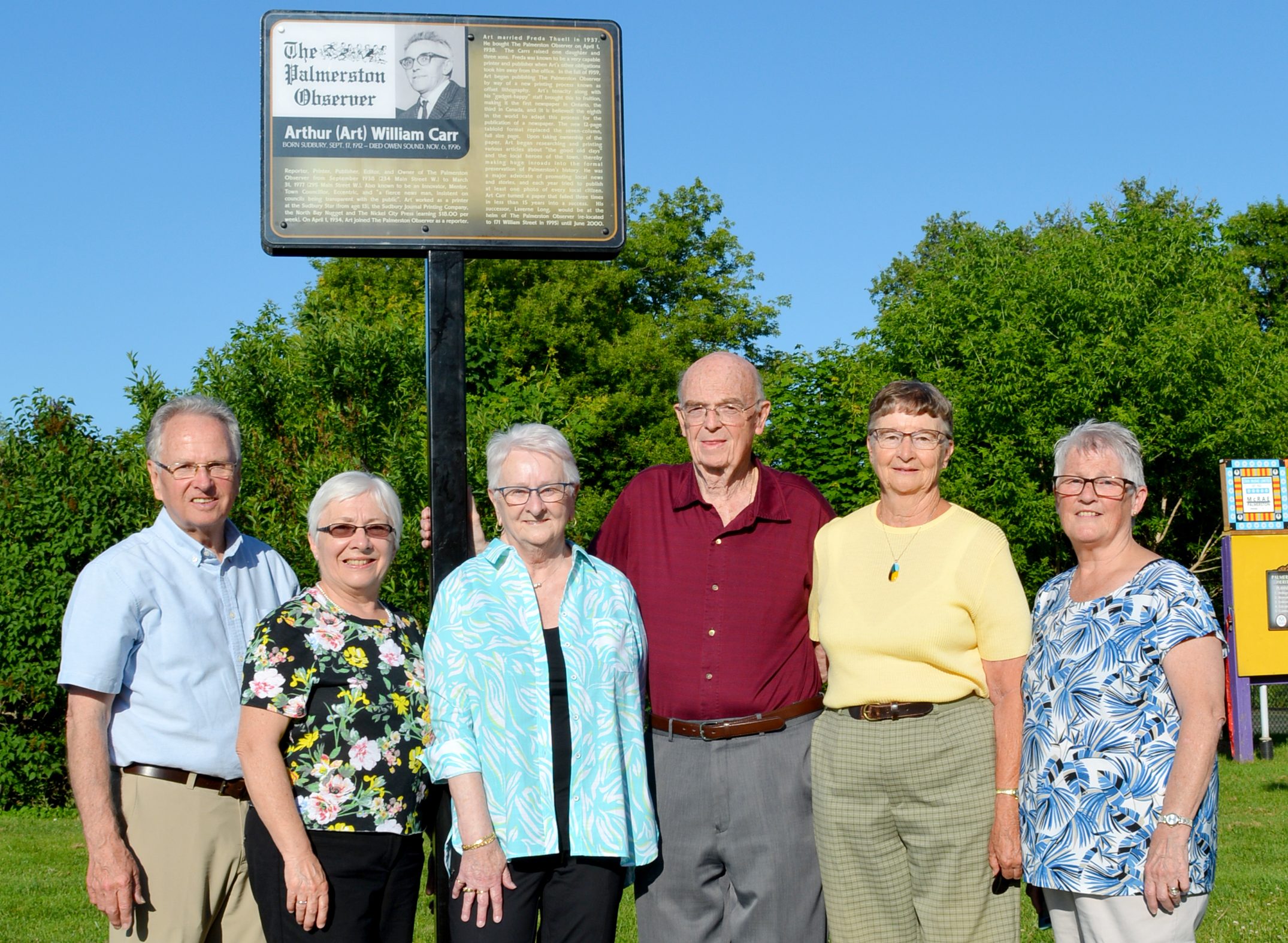PALMERSTON – For 43 years, Art Carr reported on the news and events of Palmerston, essentially documenting the town’s history during that time in the pages of the Palmerston Observer.
With that in mind, it is only fitting that a plaque honouring his contributions to the town and the newspaper industry overlooks Palmerston’s downtown.
On June 14, a crowd of about 40 people gathered near the entrance of Palmerston Lions Heritage Park for the plaque unveiling.
The plaque was commissioned by Connie and Mark Robinson, and produced by Raynbow Signs of Teviotdale.
Carr, who held every job title from printer to publisher of the Palmerston Observer, owned the paper from April 1938 to March 1977.
At the age of 13, Carr began his career in the industry, working as a printer at the Sudbury Star.
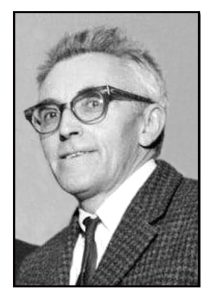
ART CARR
He also worked at the Sudbury Journal Printing Company, the North Bay Nugget and the Nickel City Press.
On April 1, 1934, Carr joined the Palmerston Observer as a reporter. In 1937, he married Freda Thuell and bought the Observer on April 1, 1938.
The Carrs raised one daughter and three sons, with Freda managing the paper when Carr’s other duties took him away from the job.
Many considered Carr a fierce newsman, insistent on councils being transparent with the public. However, he also recognized that his newspaper was, essentially, a record of the town’s history.
Carr passed away in Owen Sound in 1996.
In 2020, Carr was among nine individuals who made up the inaugural class of the Ontario Community Newspapers Association Hall of Fame.
“I’m sure if Art were present today, he’d wish that Freda might be inducted alongside himself,” said Connie Robinson.
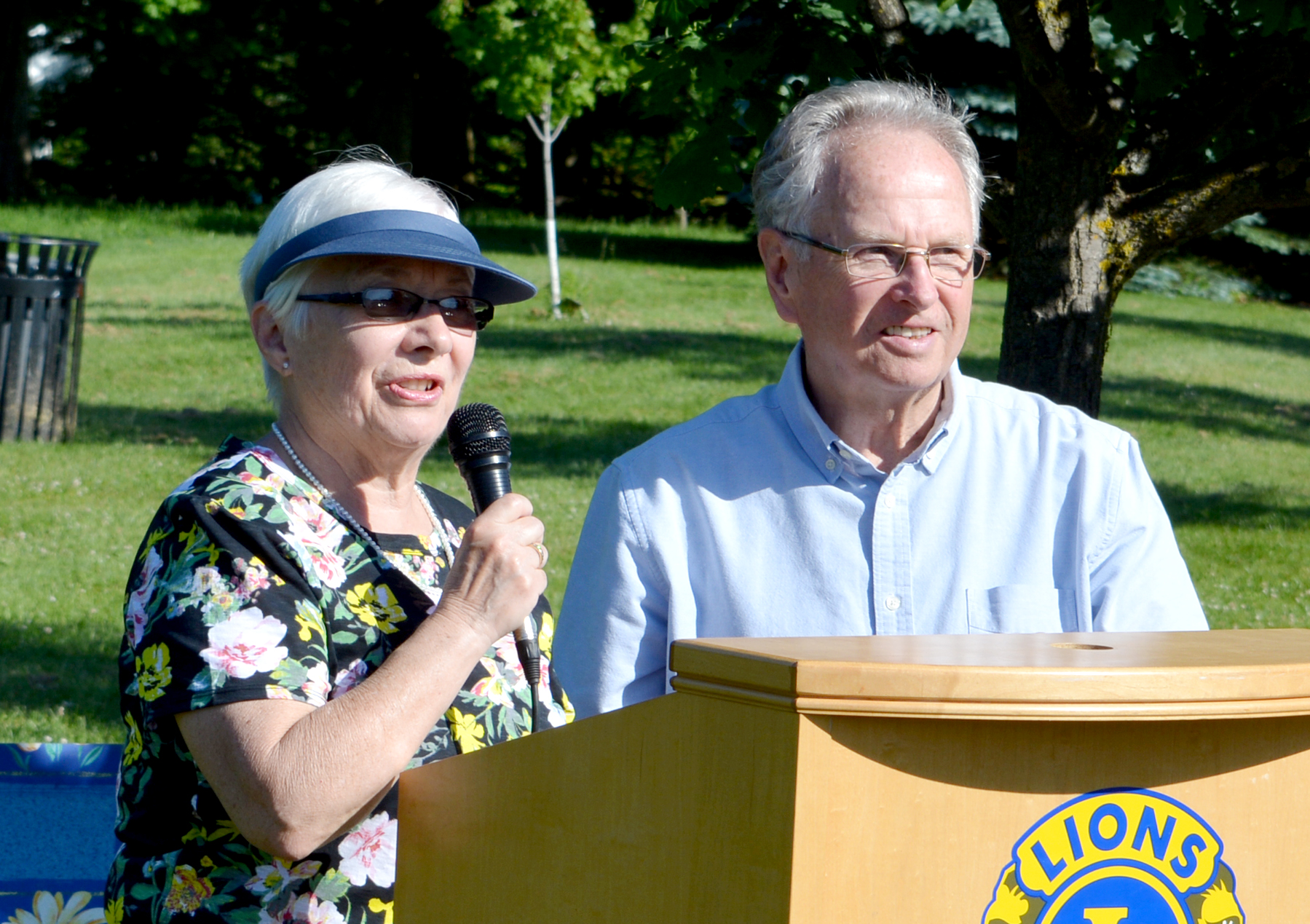
Connie and Mark Robinson welcome the approximately 40 people in attendance at the Art Carr plaque unveiling on June 14 at Palmerston Lions Heritage Park. Photo by Mike Wilson
The June 14 event featured several speakers telling stories about their interactions with Carr and the legacy he left behind.
“Art showed me the wonder of film evolving into photographs. It was like magic watching an image appear on that piece of paper,” said Mark Robinson, who was introduced to the art form by Carr at age 12.
A couple of years later, Carr declined the request of a young bride to photograph her wedding and referred her to Robinson.
“I was 14 and was shaking in my boots,” reflected Mark. “My work in photography has spanned 45 years and I thank Art for this.”
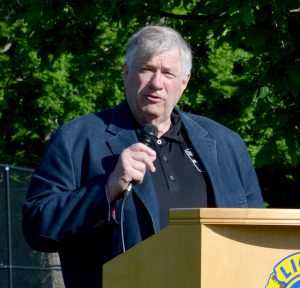
Local historian Bob McEachern shares his memories of Art Carr, the longtime Palmerston Observer publisher. Photo by Mike Wilson
Bob McEachern, a local historian and former neighbour of Carr’s, shared several stories, including one about the importance of Carr’s work in preserving the history of Palmerston.
“The paper is four decades of highlights of the town. The important issues that happened in the town are in the paper,” said McEachern.
He also spoke of Carr’s aptitude for business.
“I think what gets forgotten sometimes is that Art was a businessman, and Art survived on subscriptions and advertising; if he didn’t have those, he wouldn’t have survived.
“He told me one time, ‘I try to get everyone’s name in the paper once a year. I try to get everyone’s picture in the paper once a year. Once you did that, multiple copies of the paper would be sold.’
“Sometimes I think the town didn’t appreciate how good he was.”
In March 1977, Carr retired and sold the Observer to Laverne Long. He would own and publish the paper until 2000, when he sold the Observer to Metroland.
Long also reiterated Carr’s role in preserving Palmerston’s history.
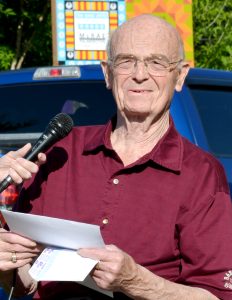
Laverne Long, who purchased the Palmerston Observer from Art Carr in 1977, spoke about the role Carr’s work at the paper played in preserving Palmerston’s history. Photo by Mike Wilson
“Upon taking ownership of the paper, Art began researching and printing various articles about the ‘good old days’ of the local heroes of the town, thereby making huge inroads into the formal preservation of Palmerston’s history,” Long said.
He also spoke to Carr’s ability to run a successful business.
“Art Carr turned a paper that failed three times in less than 15 years into a successful paper that he was eventually able to sell to me in 1977,” said Long.
Sharon Searle spoke of the impact Carr had on her life.
As a youngster, she remembers running up the street on Wednesdays after school to “check out the glass picture board to see who was going to have their picture in the paper that week.”
Searle would go on to work at the Observer and was the paper’s editor from 1984 to 1994.
And although he was retired, Carr spent the first five days of Searle’s time as editor in the office with her “to show her the ropes” and impart his wisdom – so she would trust herself and make the paper her own.
In closing, Searle said this about Carr:
“He was the king of his castle, and that was the Palmerston Observer.”
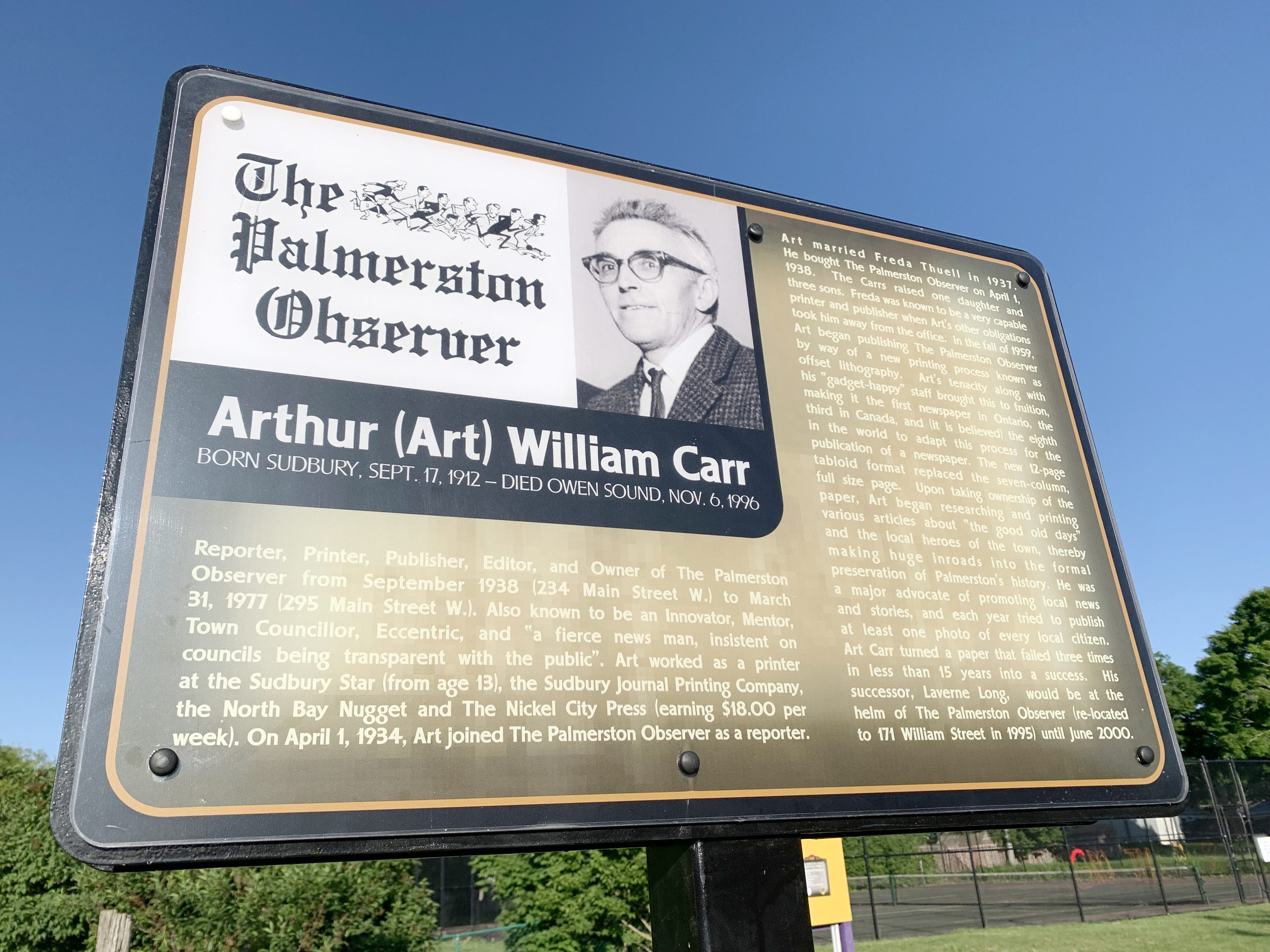
The Art Carr plaque. Photo by Mike Wilson




